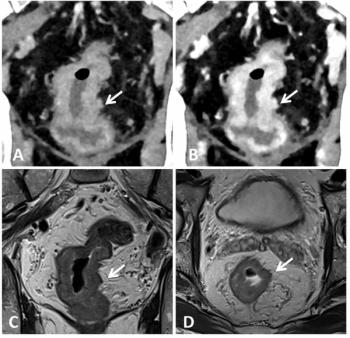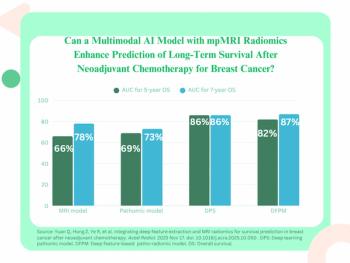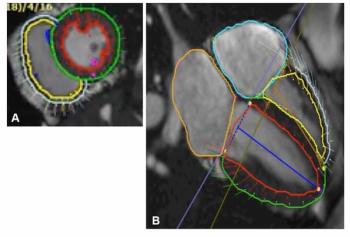
Consensus on best CMR test to predict left ventricular remodeling remains elusive
Researchers may agree that cardiac MR is the modality of choice for predicting left ventricular remodeling, but they are split on which contrast-enhanced CMR technique produces the most accurate prediction, as the conclusions of studies presented at the RSNA meeting show.
Researchers may agree that cardiac MR is the modality of choice for predicting left ventricular remodeling, but they are split on which contrast-enhanced CMR technique produces the most accurate prediction, as the conclusions of studies presented at the RSNA meeting show.
Two papers supported first-pass perfusion imaging. This measures microvascular obstructions of the myocardium to predict LV remodeling following acute myocardial infarction. Two other papers concluded that myocardial infarct size imaged with delayed-enhancement MRI is a better test.
LV remodeling following acute MI compromises architectural integrity through the formation of fibrosis and other abnormalities. These weaken the pumping power of the heart and increase the likelihood of repeat MI or heart failure.
Arguing for infarct size as the better measure, Dr. Alexander Stork of the University Clinic Hamburg-Eppendorf in Germany found in a study of 55 patients with a first reperfused MI that the degree of LV remodeling is directly related to infarct size at baseline. Patients with infarcts larger than 24% of the left ventricular area had a higher risk of remodeling than patients with smaller lesions, he said.
Dr. Guido Ligabue of the University of Modena in Italy determined that measuring infarct size relative to total myocardial volume can predict the probability of LV remodeling six months after infarction. His prospective study involved 61 patients who were imaged within two weeks of an MI. The sensitivity, specificity, negative predictive value, and positive predictive value for subsequent remodeling from a segment-by-segment analysis were 88.9%, 77.1%, 42.1%, and 97.4%, respectively.
On the other side of the scientific argument, Dr. Stijnje D. Roes of the University of Leiden in the Netherlands reported in her preliminary study of 27 patients that microvascular obstruction assessed with first-pass perfusion MRI predicts adverse LV remodeling in patients with acute MI. Her study indicated that DE MRI was not predictive.
Dr. Luigi Natale of Catholic University in Rome examined 32 patients with acute MI to determine if no-reflow measures detected with first-pass imaging are a stronger predictor of LV remodeling than infarct size. The results suggest that no-reflow is more closely related to remodeling than myocardial edema and necrotic myocardium, making it a better test for the likelihood of LV remodeling.
For now, the best advice for radiologists hoping to predicting modeling is to draw conclusions from both tests, said moderator Dr. Albert De Roos, a professor of radiology at the University of Leiden.
"The bottom line is that MRI is an excellent tool to use, and it probably a good idea to use both techniques to get the most accurate prediction of remodeling," he said.
Newsletter
Stay at the forefront of radiology with the Diagnostic Imaging newsletter, delivering the latest news, clinical insights, and imaging advancements for today’s radiologists.



























